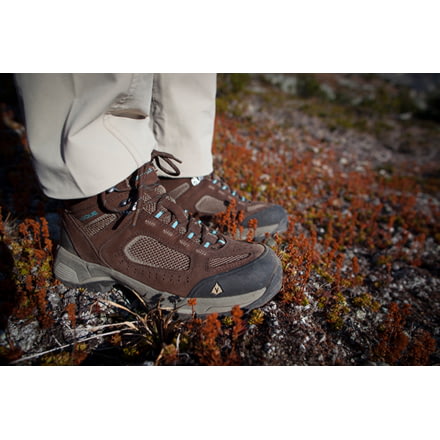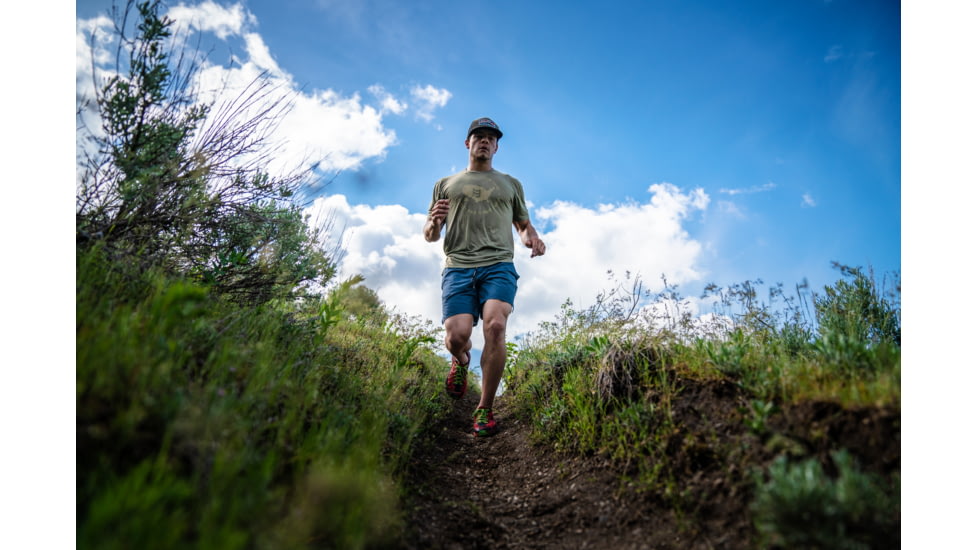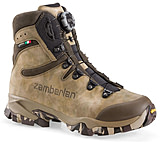If you love to spend time in the woods, having the right gear ensures you stay comfortable throughout the trip. Whether you prefer backpacking with a group of friends, taking intimate hiking trips in local nature preserves, or getting your heart rate up by running on nearby trails, the proper gear ensures you are both safe and comfortable. The footwear you choose is particularly important, and for these activities, you have two main options: hiking boots and trail running shoes. While you can often use these shoes interchangeably, each option has unique advantages that suit different types of hiking and exploring. Below is more information about each type, including common materials and uses for them, to help you decide which one suits your needs.![]()
Hiking Boots
Materials
Generally, hiking boots are made from extremely durable materials because people subject these shoes to more intense wear and tear. From climbing a mountain path to wading through streams and scaling steep inclines, hiking boots face a lot of potential damage. Because of this, manufacturers of these boots use durable, thick materials. Leather and waterproof suede are some of the most popular options, and they are often used together. This is because leather provides flexibility and scratch resistance, which protects your feet when walking through thick brush and rocky areas, while the waterproof suede prevents water from damaging the leather and getting inside the boots. Generally, the suede is around the bottom of the boots, where water is more likely to gather, and the leather extends upward to the upper and tongue, such as in the Danner Mountain 600 Boots.
For more eco-conscious consumers, some manufacturers also use recycled polyester and rubber in their women’s and men’s hiking boots. With these waterproof hiking boots, you don’t have to worry about a water-resistant coating degrading over time. You also don’t need to condition and treat the leather as often, which means the shoes will often last longer. One popular example of this is the Zamberlan Mamba Mid GTX, which uses recycled polyester for both the outside of the boot and insole.
Outsole
Aside from the fabric, the most important material is the outsole. Most women’s and men’s hiking boots use rubber outsoles, with Vibram being a particularly popular option. Vibram is a brand that uses specialized rubber compounds. To make these compounds, they treat the rubber to either harden or soften it, depending on the type of boot. For example, rugged hiking boots that are designed for climbing steep, rocky inclines would benefit from a sole that is more flexible so that you can grip the ridges and keep your balance. Alternatively, if you plan to stick to established trails or go through flat land with dense brush, a hard rubber outsole prevents sharp branches and rocks from penetrating the boots and hurting you.
Best Use Cases
For the most intense outdoor excursions, hiking boots are your best friend. From rucking up to a mountain peak in the Rocky Mountains to exploring dense wilderness in the Pacific Northwest and finding the perfect camping spot in eastern forests, you need shoes that can withstand a lot of stress. Hiking boots are often taller than normal shoes, covering your ankles to give you extra support and prevent sprains and strains. This means you can successfully climb up to the next ledge or navigate around fallen trees without worrying about slipping when you step on the ground. Plus, the thick, rubber outsoles help you keep your socks and feet dry, so you don’t have to worry about being uncomfortable for the rest of your trip.
However, you can also use hiking boots for general fun outdoors like exploring a local trail on your off day or taking the family on a weekend camping trip. Although these shoes are rated for intense, difficult situations, they are also comfortable enough to be worn for general purpose outdoor activities. Plus, even for a casual walk through the woods, you are usually better off wearing hiking boots than sneakers or sandals to prevent water, dirt, and debris from getting inside your shoes.
Trail Running Shoes
Materials
Since trail running shoes are made for people who enjoy off-road running, this type of footwear is both durable and lightweight. Unlike hiking boots, women’s and men’s trail running shoes are breathable and flexible, and mesh is often the material of choice to accomplish these goals. However, mesh doesn’t provide much protection in wet conditions, so many brands opt to only use it around the toe and tongue of the shoes, like La Sportiva. The rest of the shoe is often covered in a synthetic material, like thermoplastic polyurethane (TPU), as this gives the shoes rigidity and helps protect your feet while running.
The goal of using breathable mesh is your feet tend to get hot when you are running. By reducing the amount of heat inside the shoes, you don’t sweat as much, keeping your feet dry and comfortable while you exercise. Plus, the synthetic materials don’t degrade as quickly when exposed to water, sweat, and dirt, so your shoes will last longer even with regular, consistent use. One downside of using mesh is that water can get inside your shoes. However, many manufacturers use a water-resistant interior lining, such as GORE-TEX, which helps wick away moisture and protect your feet and shoes from damage.
Outsole
The outsole is one area where trail running shoes and hiking boots are very similar. For both footwear options, treated rubber is the most popular choice. Vibram makes many soles for trail running shoes, including the Hoka Mafate Speed 3. This outsole is their specialized Megagrip compound, which ensures you can maintain your footing even in rough, wet conditions, helping you avoid injuries during your run. This type is perfect for both hardcore trail runners who want to explore even in areas that aren’t well established, as well as casual off-road runners who just want to see some beautiful scenery during their daily exercise. You can also opt for trail running shoes that have a softer rubber outsole, which gives you more flexibility. These are often hybrid shoes that can work on both paved and unpaved paths, giving you the best of both worlds if you enjoy running through the neighborhood as well.
Best Use Cases
Trail running shoes are the perfect footwear if you love to get your heart rate up while exploring the backcountry. From a casual morning jog to training for cross country races, specialized trail shoes help you stay comfortable while running over unpaved paths. However, you should only use them when running on dirt, grass, and other natural surfaces, as pavement can damage the outsoles. Unless you purchase shoes that are meant for both on- and off-road running, wearing trail running shoes on asphalt or concrete can damage the rubber outsoles.
Which Should You Pick?
While both hiking boots and trail running shoes are solid choices, picking the right footwear depends on your unique needs. For example, if you like to take excursions with friends and family members regularly, investing in a high-quality pair of hiking boots will make your outings more fun and comfortable. Alternatively, if you want some multi-purpose shoes that you can use for running through parks, around a grass field, or doing yard work, pick up a pair of trail running shoes.
The choice also boils down to personal preference. If you don’t hike on difficult paths, trail running shoes are an acceptable option because they are made to withstand outdoor conditions. This can even be useful, as you may find that the shoes are more comfortable or offer more arch support than hiking boots, which tend to be more utilitarian in nature.
Shop Hiking Boots and Trail Running Shoes Today!
Whichever option you choose, we have a wide selection of women’s and men’s hiking boots and trail running shoes. For our boots, check out some of our top brands, including Lowa and Zamberlan. If you’re searching for trail running shoes, shop from our line of Hoka, Topo Athletic, and Adidas Outdoor.






















